Palestinian Embroidery: Stitching the Fabric of Identity and Resistance
by Ammarah Ahmed in Culture & Lifestyle on 12th December, 2023
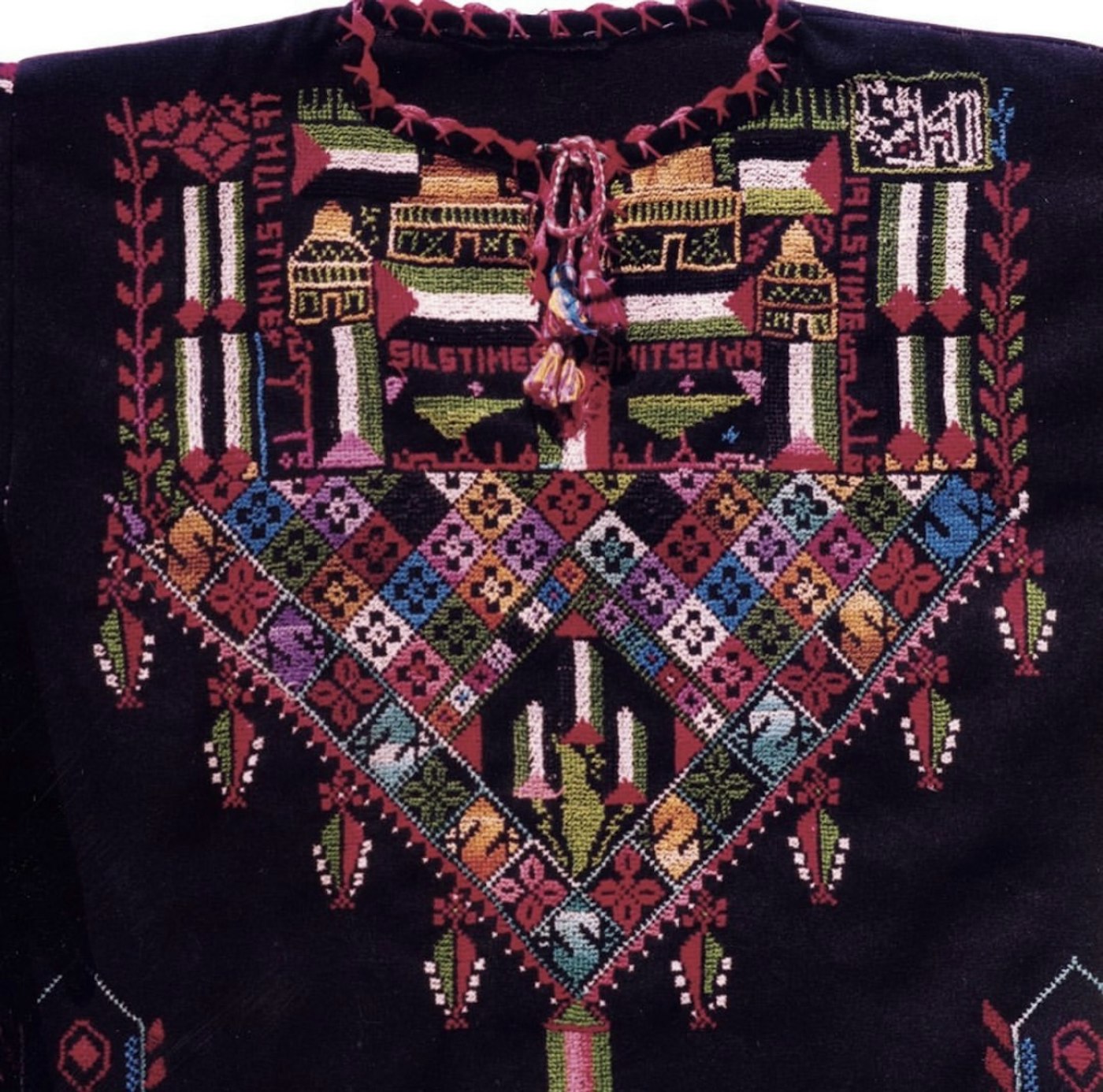
How many times have you heard the settler-colonialist claim that Palestine, prior to 1917, was a barren wasteland, devoid of civilization and vegetation? That the incoming settlers “made the desert bloom”? These claims are part of a contrived narrative used to establish the state of Israel on inhabited Palestinian soil and erase the rich history of the Palestinian people.
But the truth always trumps falsehoods.
In Palestine, the fertile landscape speaks up in support of its people. This synergy between the land and its people is illustrated in many cultural art forms, offering authentic narratives about identity and indigeneity that have become symbols of Palestinian resistance.
You may have seen symbols drawn from nature, such as the olive branch which represents the pursuit of peace and a deep-rooted connection to the Palestinian land. Another familiar emblem is the keffiyeh, a fishnet-patterned scarf, which symbolises anchoring ties to the neighbouring sea. Additionally, the vibrant embroidery worn by Palestinian women, known as Tatreez, weaves all facets of Palestinian identity into a single garment.
What is Tatreez?
Tatreez, a centuries-old craft, is a tradition passed down from mother to daughter, deeply embedding it into the Palestinian lifestyle and culture. Originally practised in rural communities, women of all ages would gather to share embroidery skills, strengthening the craft and contributing to its enduring legacy.
Palestine is a largely agricultural society; the culture is deeply rooted in the land which is vividly reflected in the embroidery. Common motifs often include native trees, flowers, fruits and vegetables, each representing the distinct region a woman comes from. For instance, a thobe (full-length dress) from Ramallah might sport the town’s native palm trees, while the cypress tree holds symbolic significance for Gaza and Hebron (al-Khalil) (1).
With the presence of illegal Israeli occupation and apartheid in Palestine for the past 75 years (2), Tatreez became a female-led resistance movement that advocated for the true narratives of history and identity. With motifs that indicate her origins in the land, Tatreez is a direct rebuttal of the settler claim that Palestine was a “land without a people for a people without a land.”
Through needle and thread, Tatreez stitches the story of Palestinians, which is irrefutably rooted in the land, creating the fabric of identity and resistance against the forces that seek to erase it.
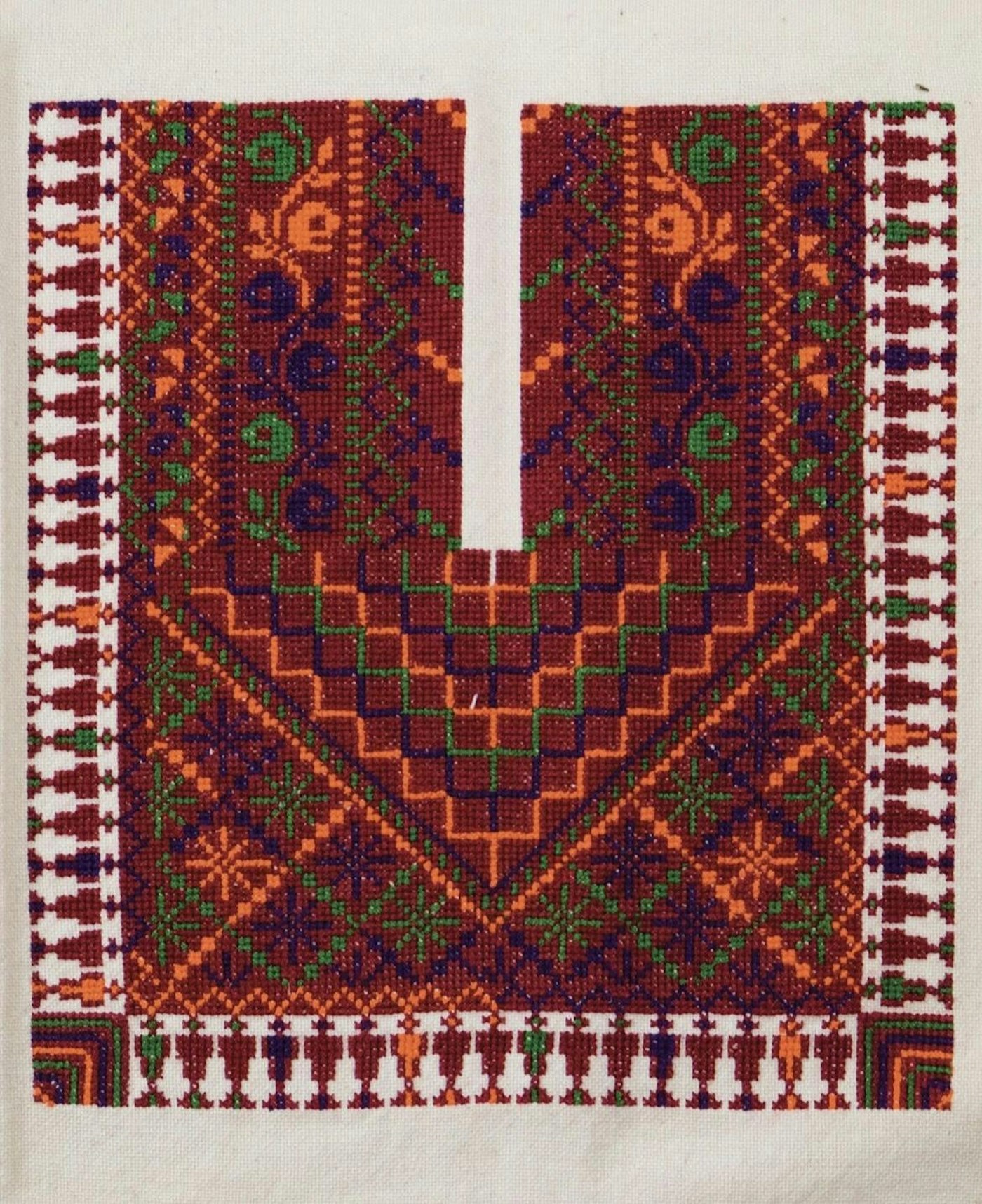
Photos courtesy of TIRAZ / Widad Kawar collection of Arab Dress. Instagram: @tirazcentre. | Jaffa, orange blossom motifs
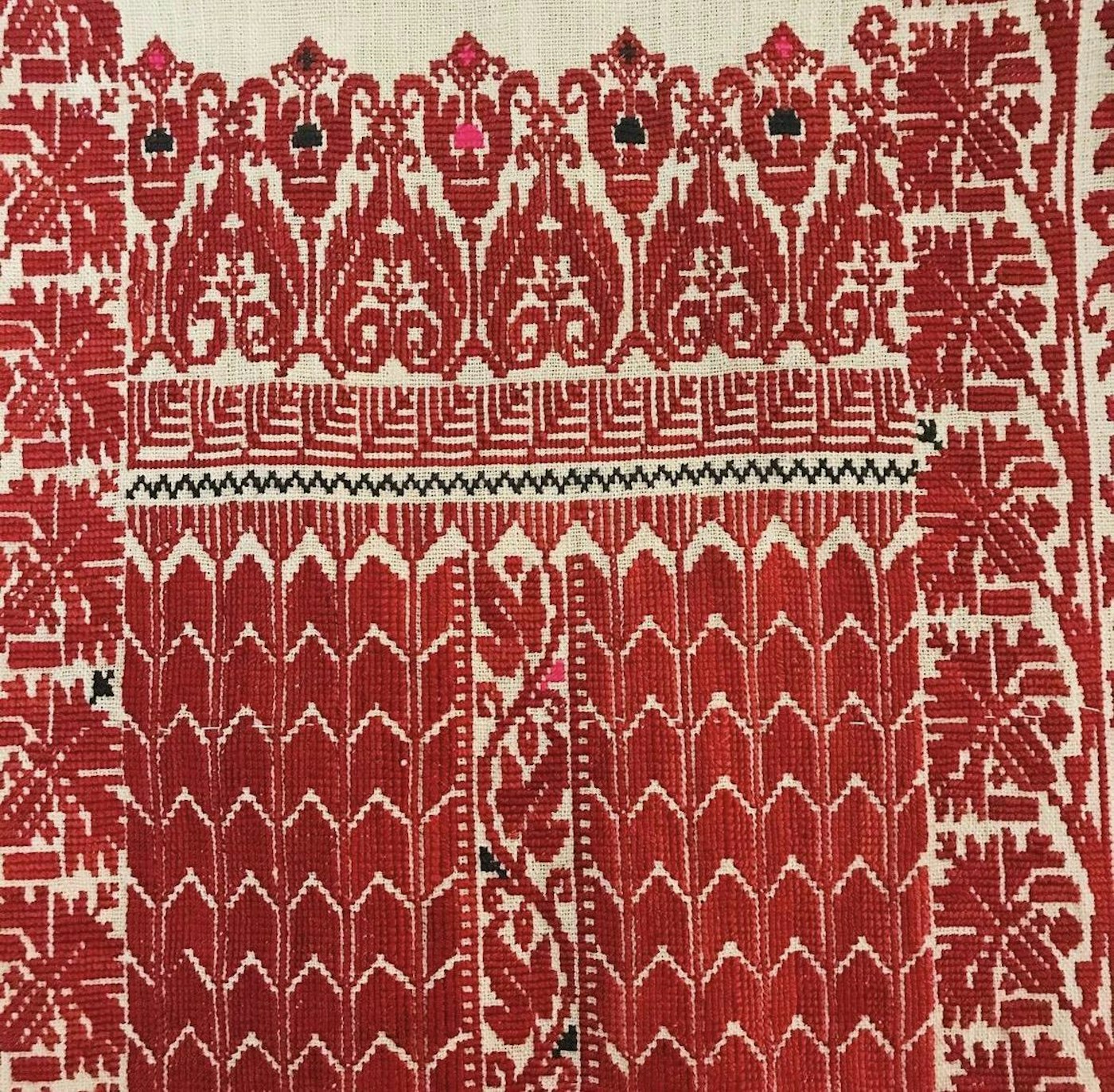
Photos courtesy of TIRAZ / Widad Kawar collection of Arab Dress. Instagram: @tirazcentre. | Ramallah, high palm motifs

Photos courtesy of TIRAZ / Widad Kawar collection of Arab Dress. Instagram: @tirazcentre. | Hebron, cypress tree motifs
In a tribute to the Palestinian cause, this article sheds light on Tatreez, an art form that mirrors the steadfastness and endurance of Palestinian women in the face of overwhelming adversity.
Tatreez Talks
Each stitch is a letter; each motif is a word; each garment is a story.
For Palestinian-American, Hanein Taher (LPC), “Tatreez isn’t just the Arabic word for embroidery. It is a symbol of my heritage, a way for Palestinian women to show resistance through an intricate form of art, and a way to preserve our Palestinian identity.”
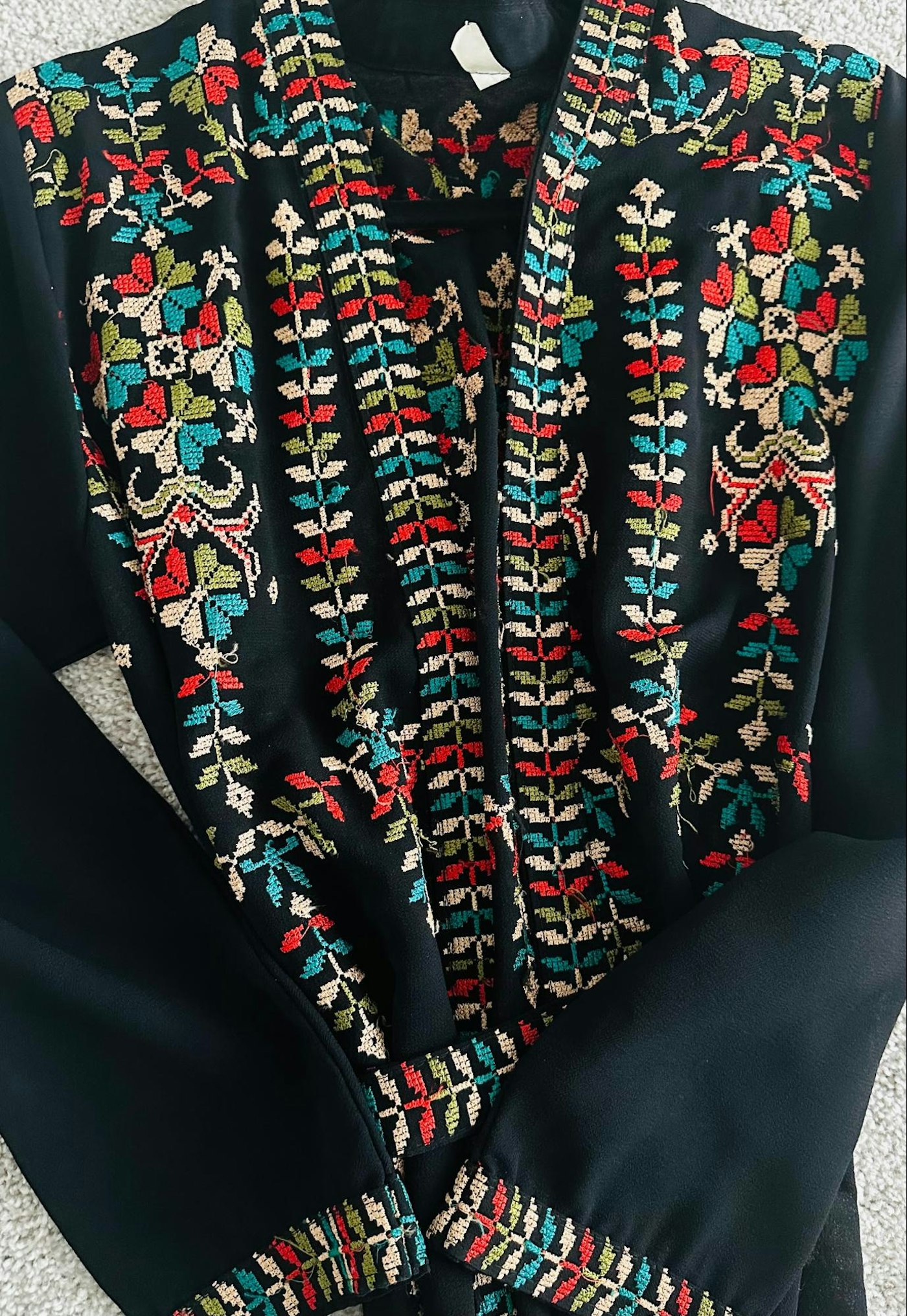
Photo courtesy of Hanein Taher: A robe-style dress sporting flower disc motifs, most likely from Ramallah
How did Tatreez evolve into such a strong narrative? Its power lies in its ancient ties woven within the culture. Tatreez has served as a vessel of continuity throughout the ages, making it the perfect instrument to resonate during pivotal moments of the Palestinian struggle for justice.
Tatreez and Al-Nakba (The Catastrophe)
Between 1947-1949, over 700,000 native Palestinians were forcibly expelled from their homes to make way for settlers and their settlements. This grave act of injustice became known as al-Nakba, or The Catastrophe (3). Displaced with nothing but the clothes on their backs, Tatreez emerged as a form of identification, featuring regionally-specific motifs that served as evidence of Palestinian existence in the land long before settlers arrived and occupied the country.
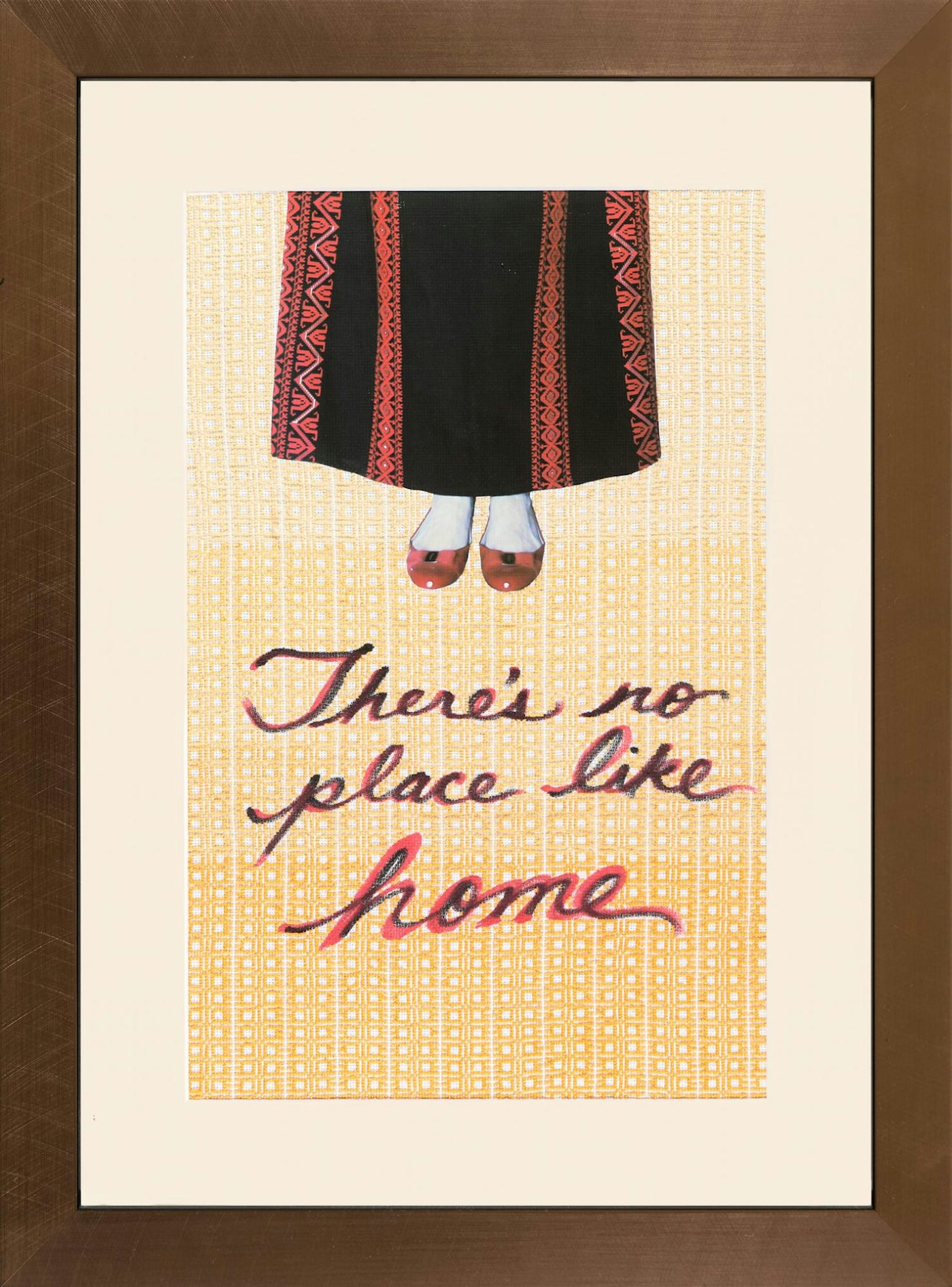
There’s No Place Like Home by Joanna Barakat draws a parallel between the Palestinian right to return after the Nakba and the quest of Dorothy from The Wizard of Oz to return to her home in Kansas after the great tornado catastrophe. The background of the iconic “Yellow Brick Road” is embroidered using the Palestinian house motif, which is intentionally left empty to represent the houses forcibly taken from Palestinians. A woman is seen wearing Tatreez and Dorothy’s iconic red slippers.
Tatreez and the Intifada (Revolution)
The story of Tatreez continues post-Nakba. The First Intifada (uprising) of the late 80s and early 90s is a time marked by civil disobedience, characterised by widespread mobilisation of organised strikes and protests against the Israeli occupation (4). During this time of unity and solidarity, Israeli authorities banned the public display of the Palestinian flag (much like we see happening across the world today). With passionate resolve, Palestinian women began stitching the flag’s colours of red, black, white and green, as well as other national symbols into their thobes in a brave and defiant act of resilience, advancing the non-violent resistance movement. This became known as the “Intifada dress.”
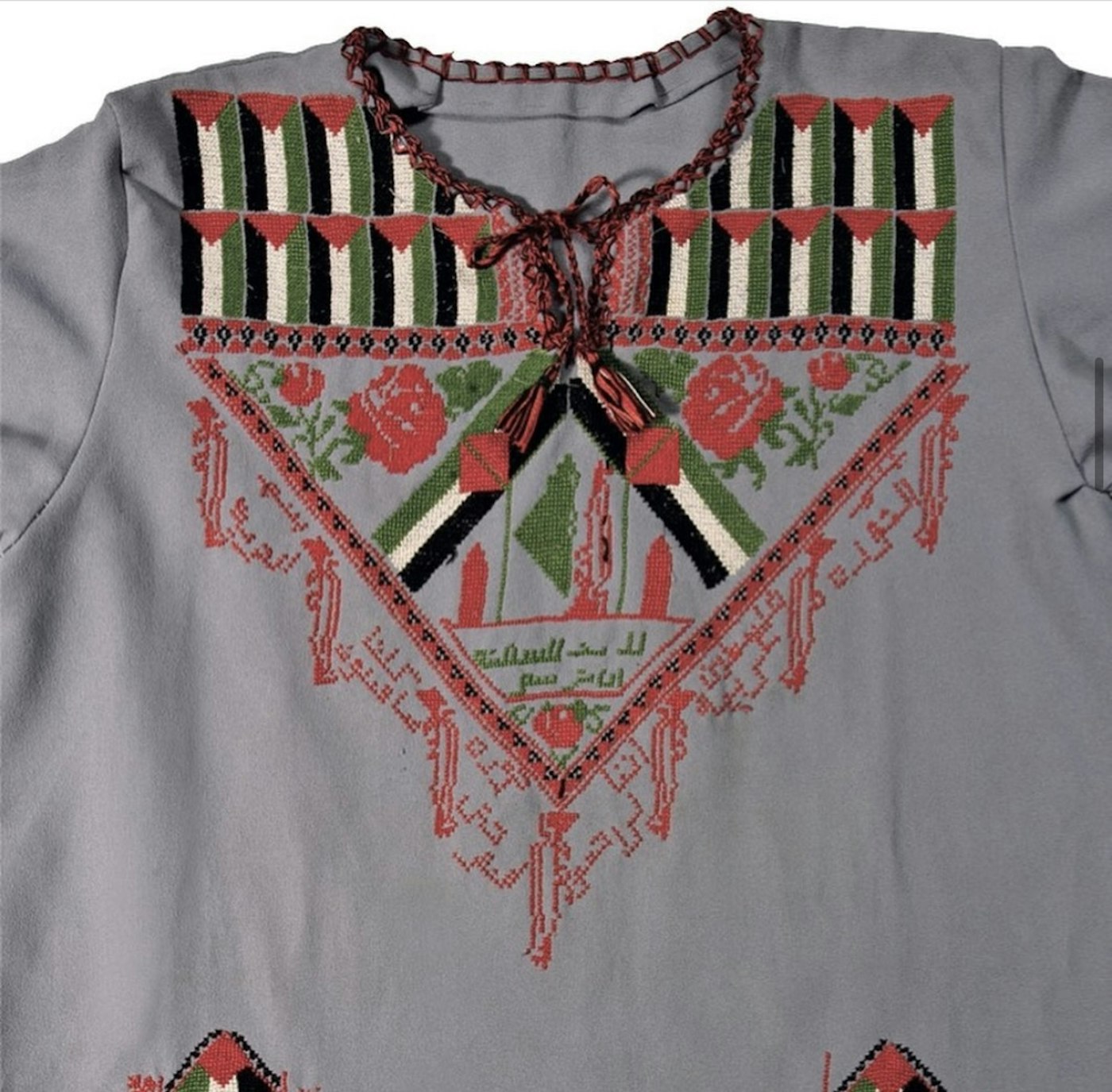

Photos courtesy of TIRAZ / Widad Kawar collection for Arab Dress. Instagram: @tirazcentre
Tatreez became an armour for these courageous Palestinian women. With the increase of illegal settlements, the resistance straightened their backs and sharpened their needles to create a fabric of resilience, transforming local motifs into emblems. The embroidery spoke of the ceaseless connection to the land and refusal to accept settler claims of ownership.
Some common national symbols are showcased here:
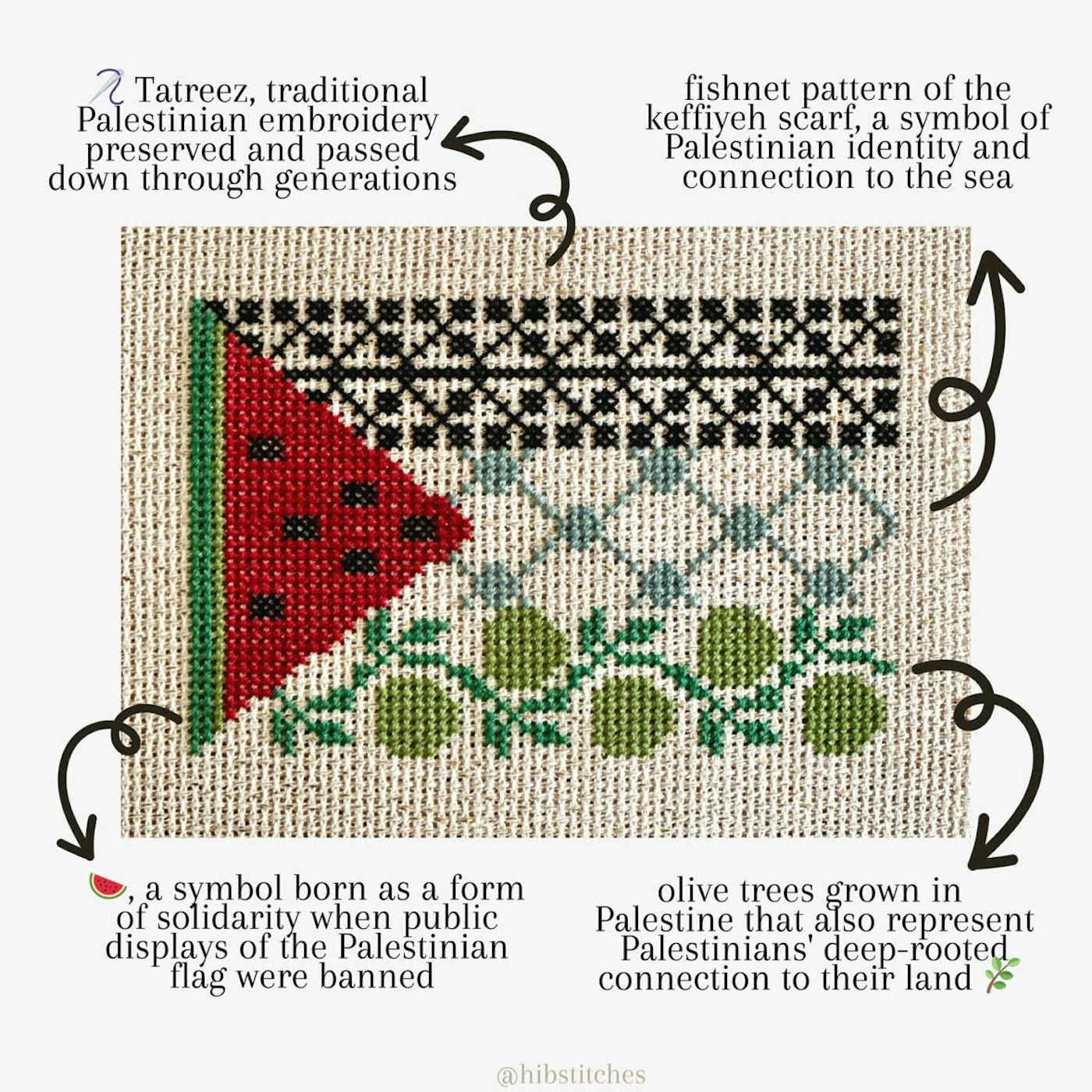
Embroidery work of the Palestinian flag made up of different national symbols that represent the struggle. By @hibstitches on Instagram.
History is documented by sharing stories and experiences through cultural craftsmanship. It also plays the role of forging unity — especially for those in the diaspora. For people who have been uprooted from their homeland, this provides a sense of home and allows the culture to flourish.
Preservation of Tatreez in Displacement: Refugeehood and the Diaspora
Despite the absence of their physical homeland, Tatreez craftswomen persist in keeping the Palestinian landscape and identity alive through resolute preservation efforts.
Inaash is an NGO based in Lebanon that aims to promote and protect the art of Tatreez by training and employing Palestinian women in refugee camps to embroider Tatreez items, which can be found on their website.
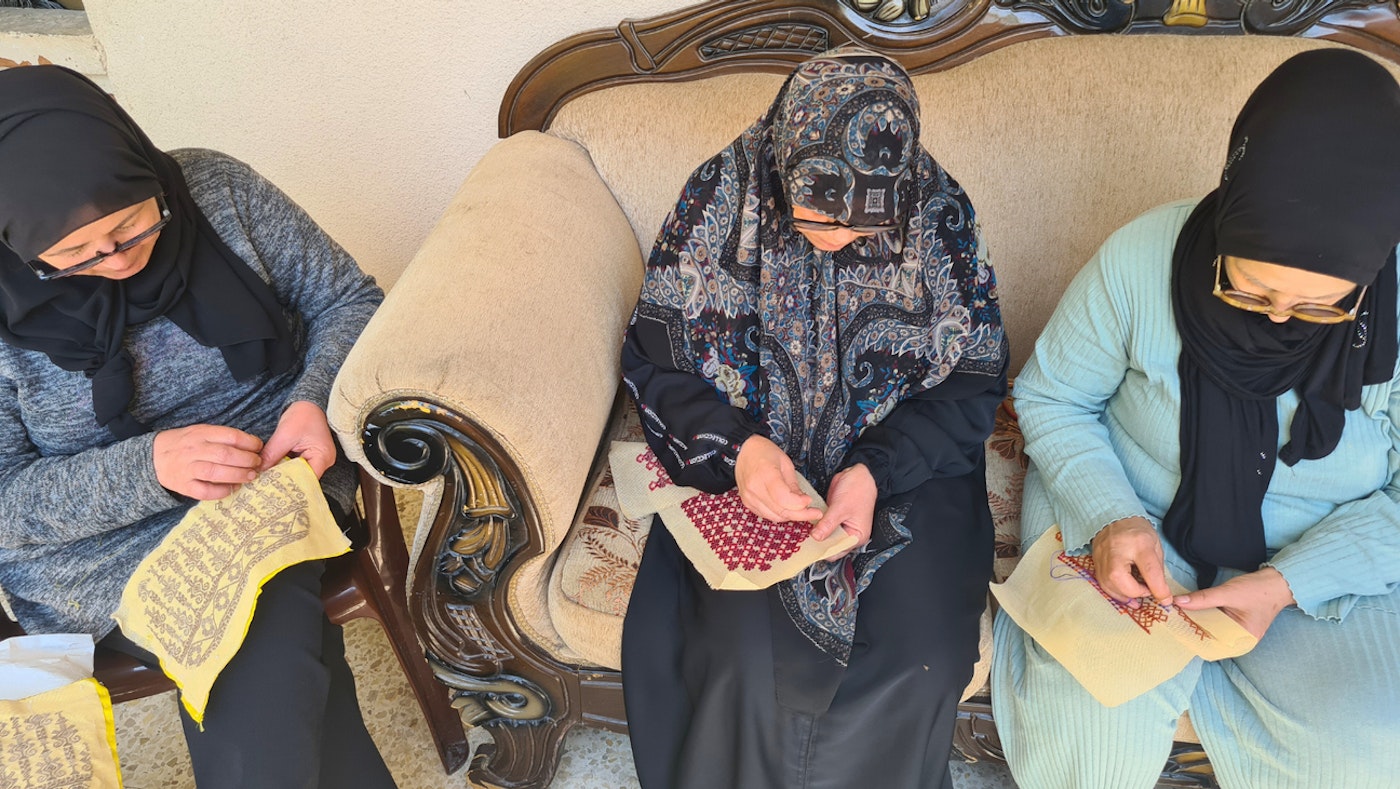
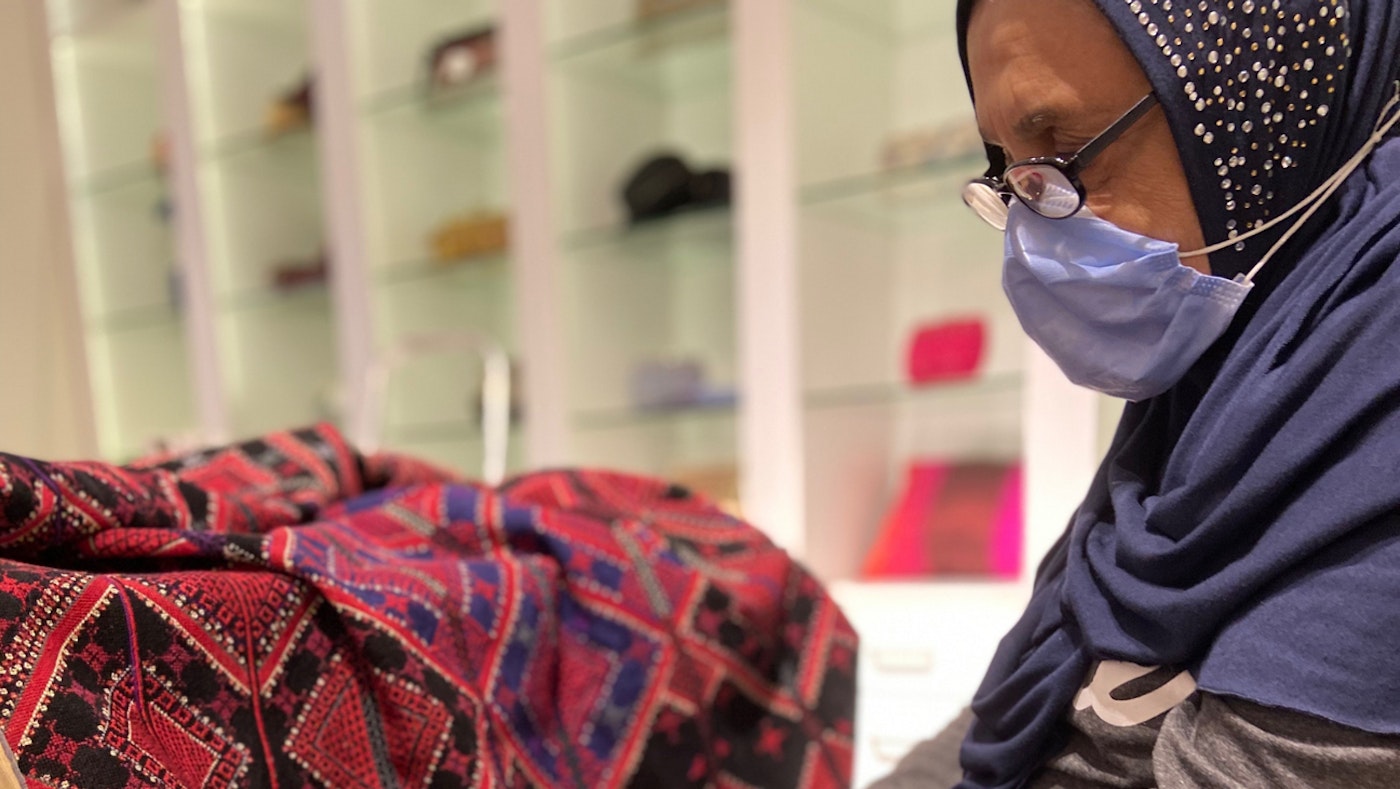
Photos courtesy of Inaash. Instagram: @inaashassociation
Since its initiation in 1969, Inaash has helped over 8,000 women in refugee camps across Lebanon revive a sense of sisterhood and belonging, as well as provide individual livelihood and cultural prosperity. (5)
In 2021, UNESCO recognised Tatreez as part of the Representative List of the Intangible Cultural Heritage of Humanity. This was seen as a great achievement for the preservation of Palestinian culture. Let’s be clear – Tatreez is not a dying craft. It’s almost inextricably linked to Palestinian identity. Still practised in Palestine and in the diaspora, it sometimes employs digitised machinery instead of the traditional hand stitching method. Palestinians worldwide have steadfastly held onto this tradition, making great efforts not only to preserve it, but also to revive interest through teaching, training and different art forms.
Tatreez and Technology
It’s also quite common to see Tatreez on household items and everyday objects. Digitised Tatreez allows for the craft to live on through various forms beyond clothing.
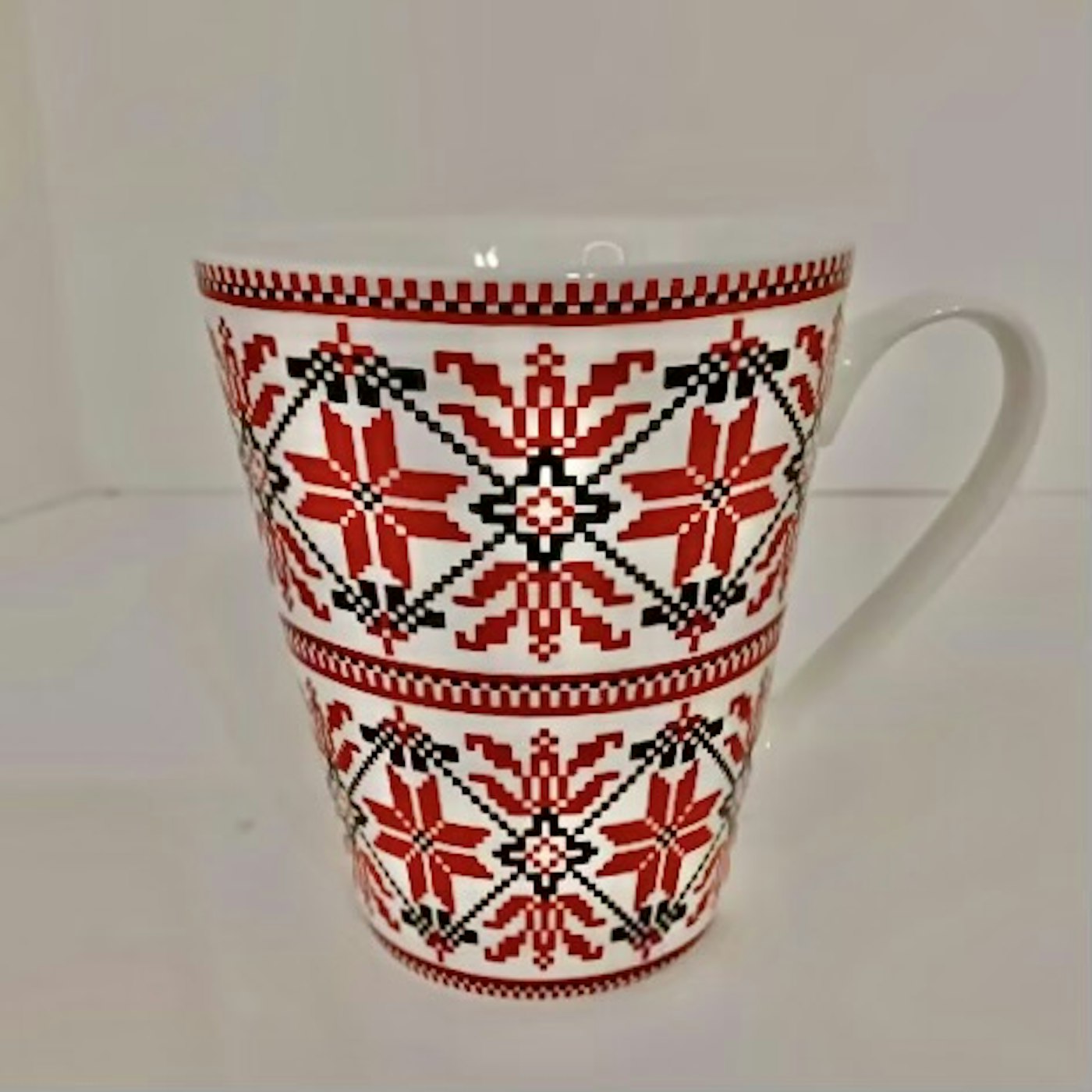
Photo courtesy of Hanein Taher
In light of this, Tirazain Initiative is an archival digital library dedicated to the preservation of Tatreez. As you scroll through the website, you can find various digitised motifs and learn about their origin. Tirazain aims to honour the craft and craftswomen by preserving their labour of love, providing an easily accessible archive of Tatreez for research, the public and artists.

Photos courtesy of Tirazain Initiative | Gaza, digitised cypress panel motif
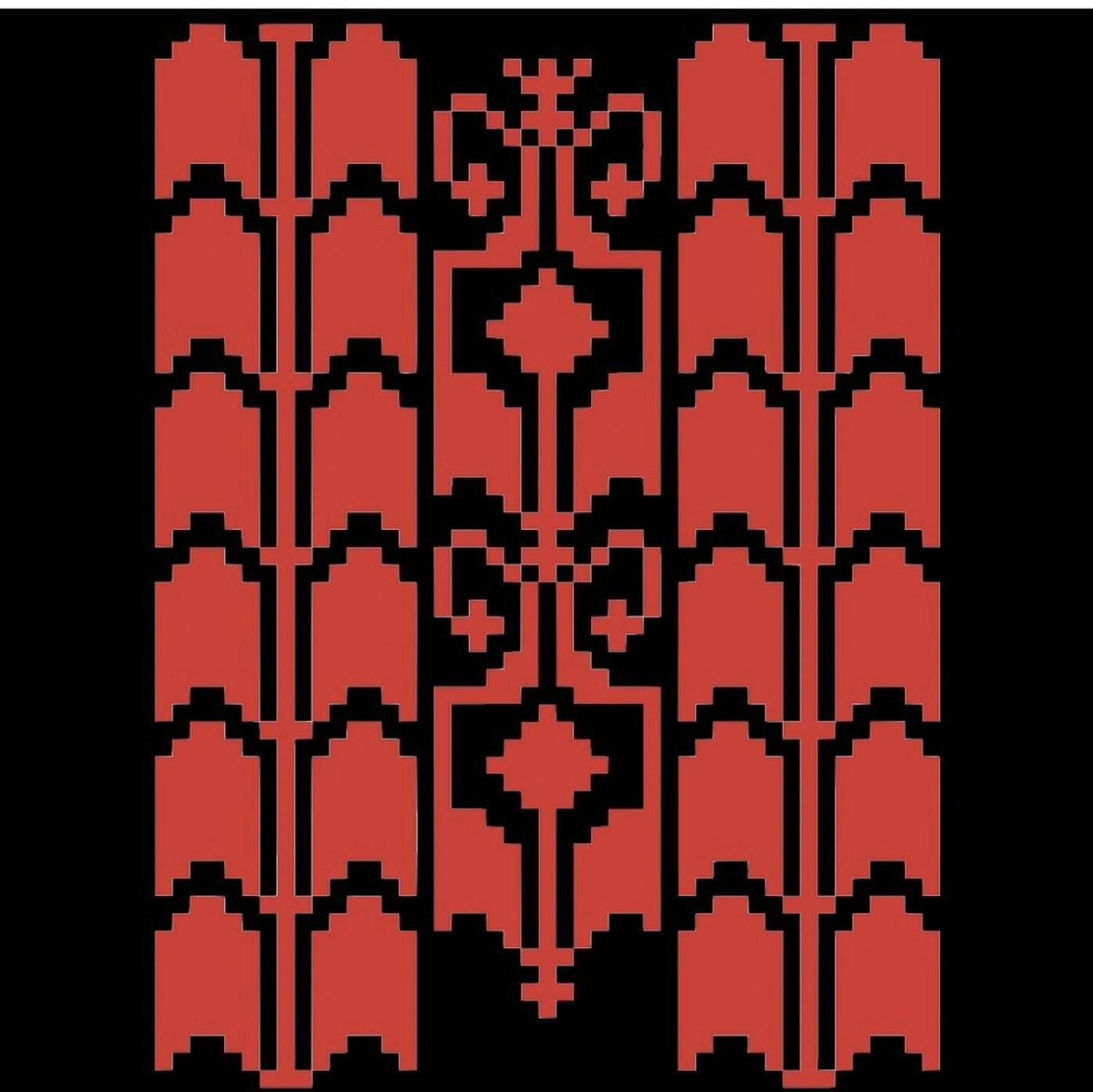
Photos courtesy of Tirazain Initiative | Ramallah, digitised high palm tree motif
Tatreez’s roots in storytelling translate well into many art forms beyond traditional hand-stitched apparel. Several artists have channelled their connection to Tatreez into their artwork.
Maya Amer, a Palestinian digital artist, grew up with an awareness of the significance of textiles in her culture, learning the craft from her mother. When she finally understood the meaning behind the various motifs, she used her artistic skills to preserve Tatreez during the pandemic.
“I wanted to preserve all the symbols in a way that can be reproduced much easier than the handmade stitches. As an Illustrator, drawing digitally with squares is like pixel art.”
Maya revisited her archived digital Tatreez work amid the 2023 assault on Gaza. She combined her artistic skills and her cultural connection to Tatreez into the digital art of “data representation,” visualising the information coming out of Palestine, and communicating the need for a ceasefire and justice. She created this deeply moving art piece which illustrates the distressing death toll in Gaza.

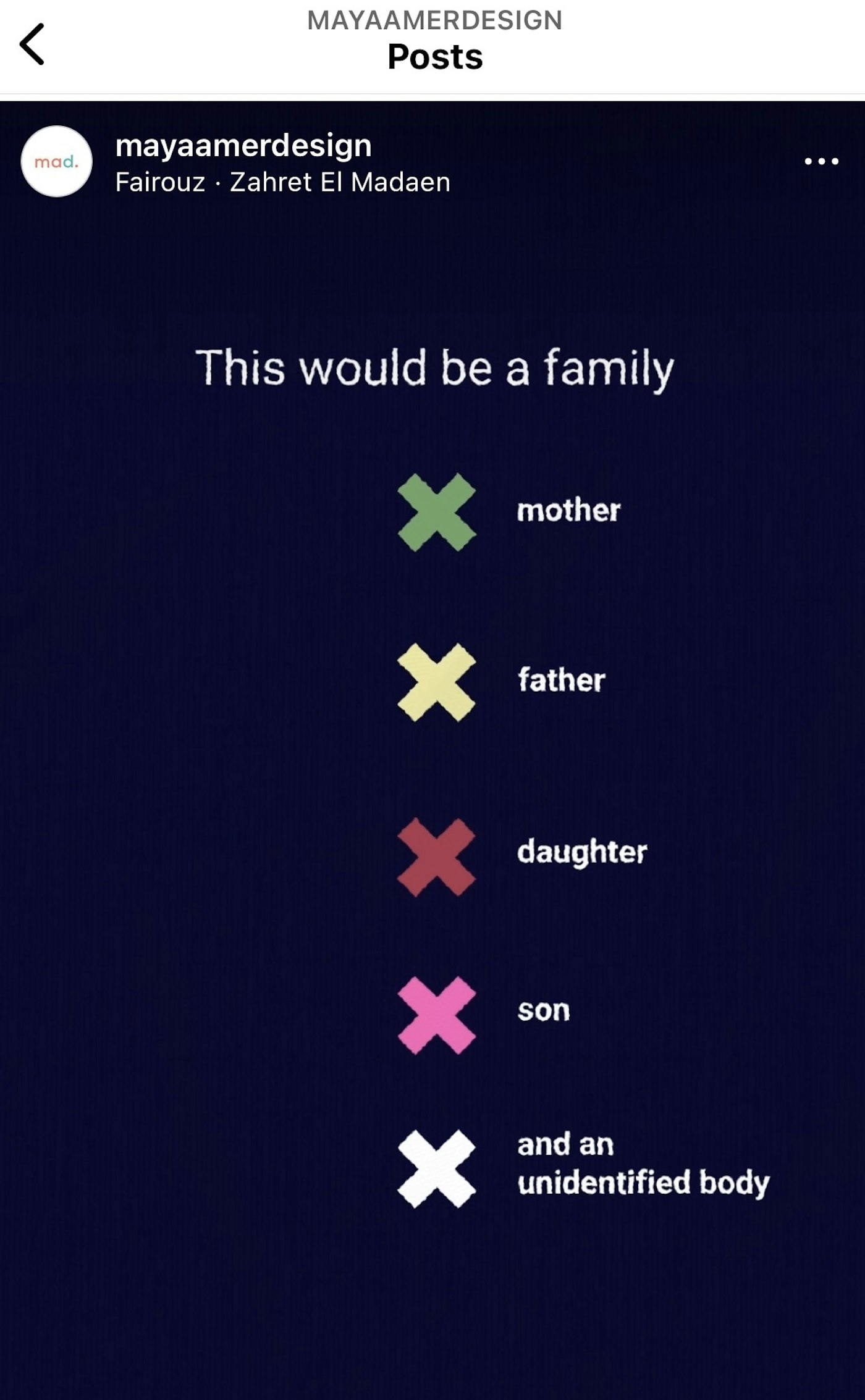
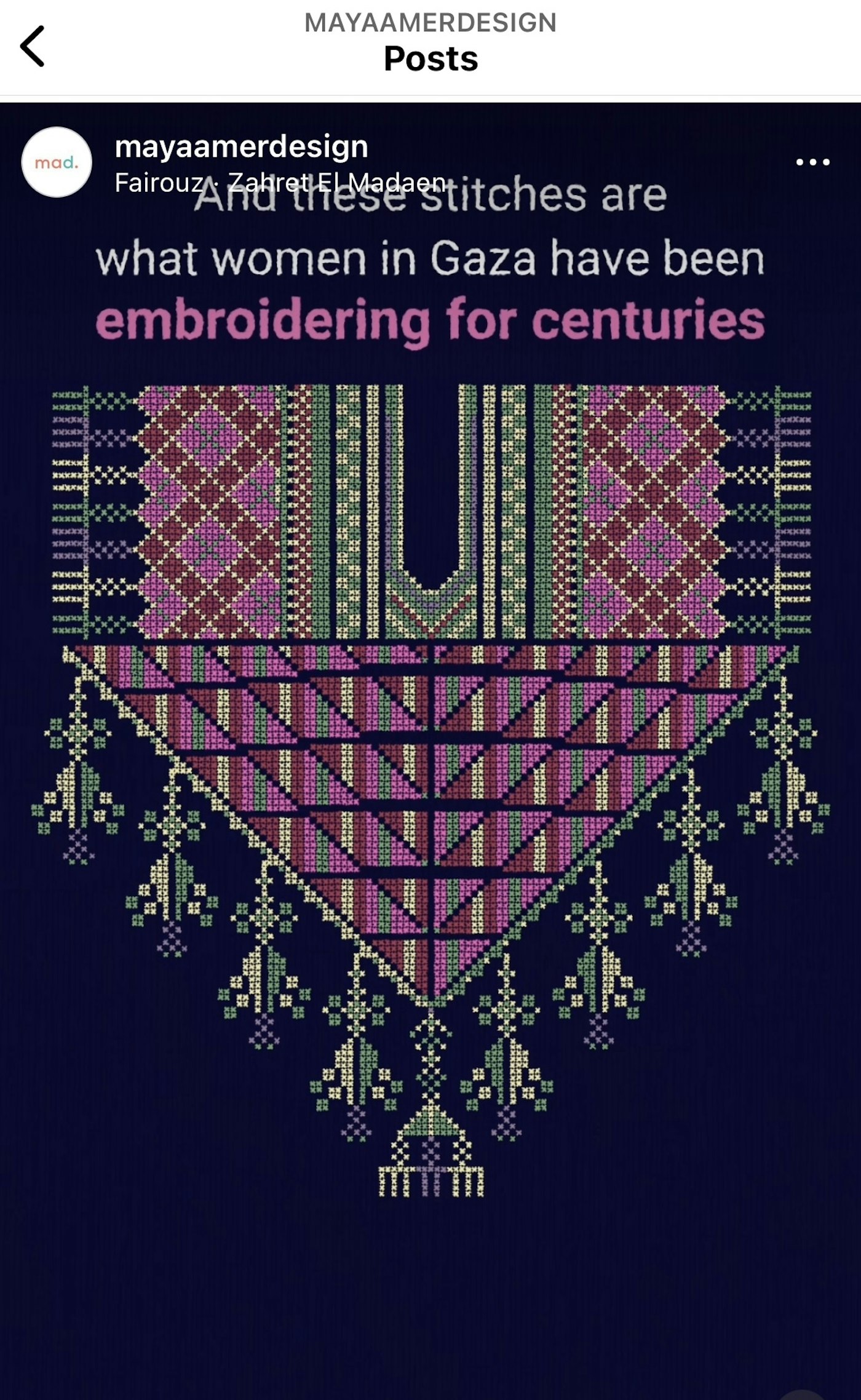
Screenshots from a reel on Maya Amer’s Instagram page @mayaamerdesign. Maya’s art portrays a distinctively Gazan style of Tatreez, including the cypress tree motif in the chest panel known as “qabbah.”
“I’ve seen tons of examples of artists taking concepts that are hard to grasp and turning them into beautiful works of art … they say the best art comes out of the darkest times. I was overwhelmed with the amount of attention this [post] got. I’m so grateful for everyone who shared the message to more and more people, and I wish I never had to add a single stitch to this artwork, I wish it never existed.”
In her efforts to raise awareness about the devastating crisis, Maya urges everyone else to speak up too, “Just use your platform and do whatever you can to get the message out there until they lift the siege, cease fire and let Palestinians live.”
Reflections on Tatreez
Whether in the homeland or in the diaspora, the Palestinian story lives on and continues to unfold with steadfastness. Palestinian embroidery transcends mere decoration; it is an act of resistance that seeps down into the very threads and fibres of clothing.
Currently, we’re witnessing the tide shift towards solidarity with the Palestinian cause, driven by an unwavering desire for truth and justice. For anyone wondering how to support the Palestinian cause; it’s as simple as using your voice. And, if we’ve learned anything from Tatreez, it’s that a voice doesn’t always have to be verbal or vocal. Spoken or unspoken, individually or collectively, voices are a catalyst for change.
Rising from the ashes of calamity and persisting with courageous determination is what it truly means to bloom. The perseverance of Tatreez and its craftswomen is an example for all who are dedicated to the liberation of Palestine. To know Tatreez is to know the Palestinian cause; to understand the need for true narratives, reclaimed identity, rightful ownership, and steadfastness in the way of justice, recognition, and liberation.
Insha’Allah, Ameen.
References:
- Tirazain Initiative
- Human Rights Watch, 2021. A Threshold Crossed: Israeli Authorities and the Crimes of Apartheid and Persecution. Human Right Watch.
- IMEU, 2023. Quick Facts: The Palestinian Nakba (“Catastrophe”) Institute for Middle East Understanding.
- IMEU, 2012. 25th Anniversary of the First Intifada. Institute for Middle East Understanding.
- Inaash
Selected bibliography:
- Abouali, Diana. Palestinian Embroidery: A Rich and Diverse National Heritage. Interactive Encyclopedia of The Palestinian Question. 2022.
- Dedman, Rachel. At the Seams: A Political History of Palestinian Embroidery. Birzeit: The Palestinian Museum, 2016.
- Güner, Chelsie Y. Diaspora and Tatreez: Reflections in Stitch. Journal of History of Design and Curatorial Studies. 2021.

Ammarah Ahmed
Ammarah is a South Asian Muslim writer born in the U.S. who focuses primarily on Muslim identity. She believes in the power of the pen, and seeking and spreading knowledge. Her goal is to reclaim the narrative on Muslims through her writing to inspire peace and understanding.